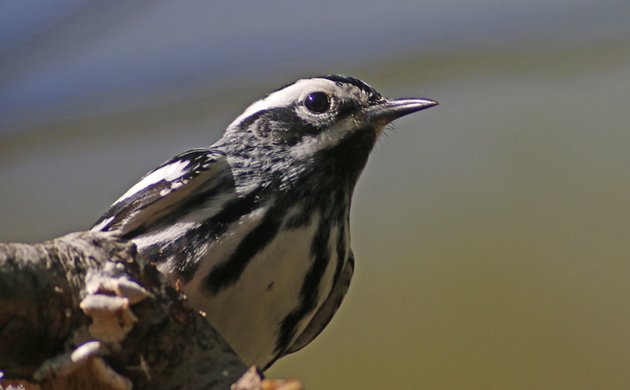
Mid-to-late April keeps birders in the northeastern United States on edge as we want to see every species as it arrives and we don’t want to miss anything. We had some great birding in New York City parks this past weekend and I managed to get my Queens wood-warbler count up to nineteen for the year. And while the bright and colorful wood-warblers are always a crowd-pleaser, I spent some time paying attention to our colorless wood-warbler this weekend, Mniotilta varia, the Black-and-white Warbler.
The Black-and-white Warbler often creeps on tree trunks and branches, even upside-down, though with its snazzy black-and-white stripes it is unlikely to be mistaken for any species of nuthatch or creeper. I could swear that I once saw it referenced in an old bird book as a “Nuthatch Warbler” but I’ll retire my binoculars if I can remember where I saw that reference. The black-and-white is abundant in spring migration here in New York though generally, once a birder checks it off for the year, it is ignored. After all, who wants to bird in monochrome when spring migration so often offers technicolor?
What’s not to like about the Black-and-white Warbler? Oh, yeah, the lack of color! What are we, Europeans?
All of the images in this post were taken in Forest Park, my home-away-from-home in spring, and all were digiscoped with my Swarovski digiscoping rig. Sitting or standing quietly while wood-warblers, even those without bright colors, forage around me is one of my favorite things to do.
Watching them hunt can be fun though. Here, a Black-and-white Warbler prepares to dismantle and eat an insect.
I think was an ant before the black-and-white dismembered it.
Remember this undertail pattern. Only Black-and-white Warblers have it!
Alright, enough of this nonsense. Bring on the gaudy birds!
…
If you liked this post and want to see more great images of birds make sure to check out 10,000 Clicks, our big (and growing) page of galleries here at 10,000 Birds.
…


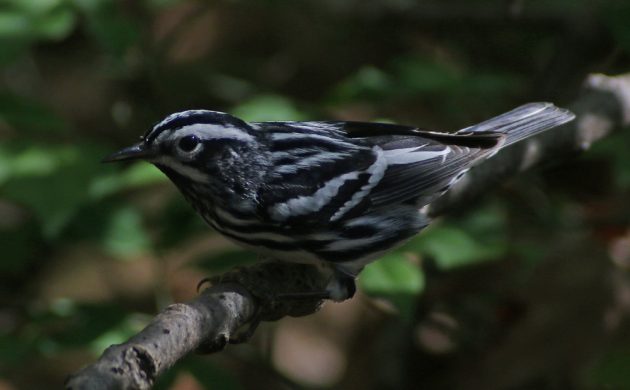
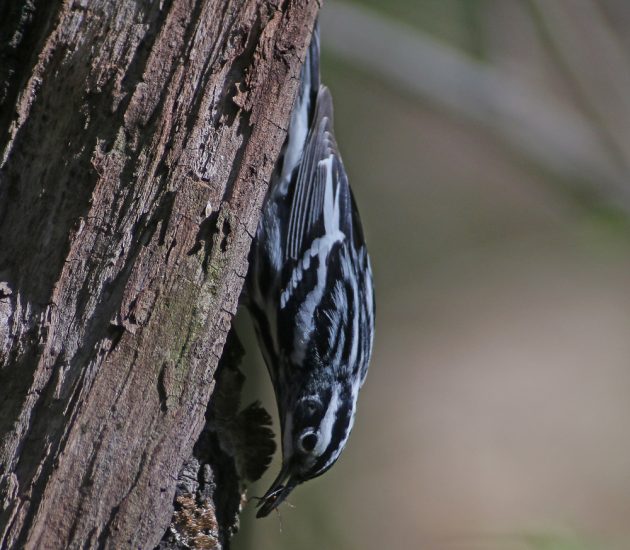
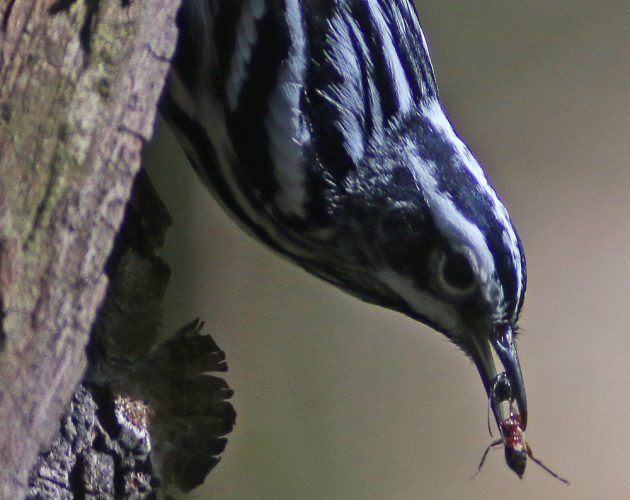
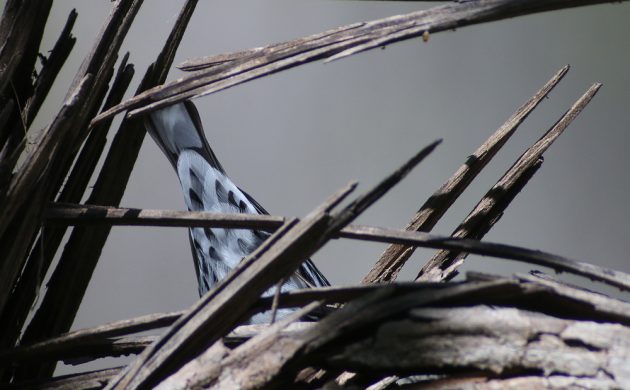
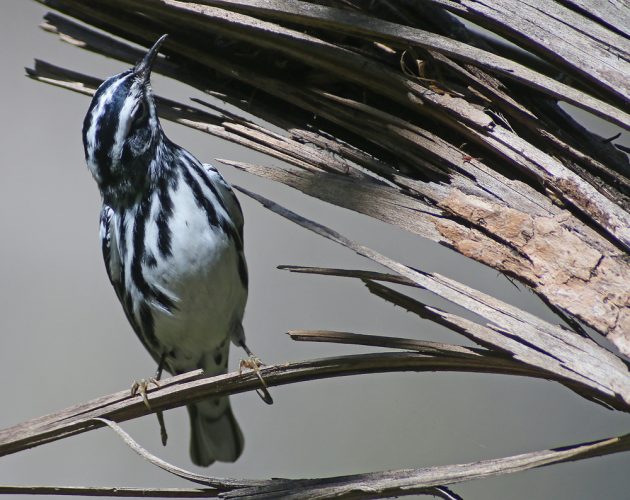




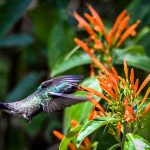
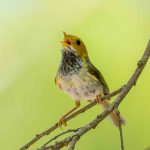
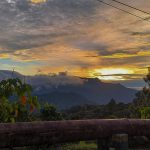
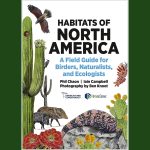



I have a 1912 field guide Land Birds East of the Rockies Part 2 which says these birds are usually known as Black and White Creepers. Hope this helps.
Close enough!
Thanks.
Awesome photos! Saw my first black and white warbler yesterday in West Chester PA… I was unfamiliar with it and thought ok, outstanding black and white stripes, nuthatch size and climbing upside down on the trunk of a tree… must be some type of nuthatch! Haha